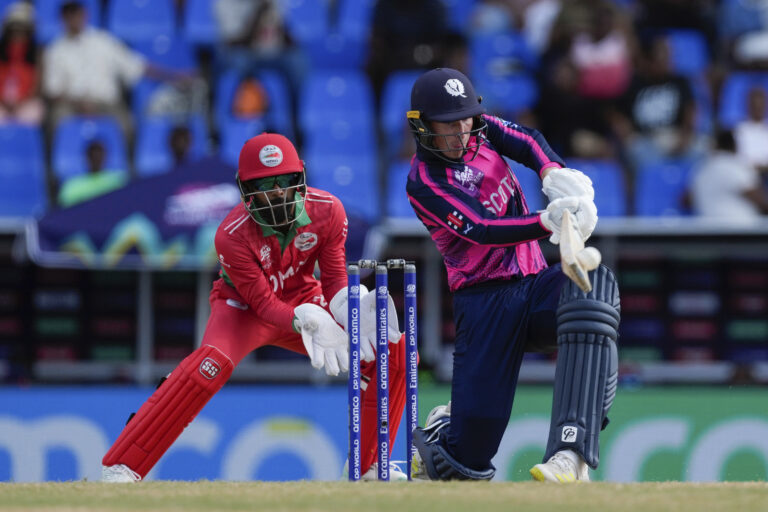Cricket and Artificial Intelligence: Analyzing Player Performance
Allpaanel, 11xPlay: Player performance analysis in cricket has become increasingly sophisticated with the advancements in data analytics. By leveraging data-driven insights, teams can closely monitor and evaluate player performance metrics such as runs scored, bowling averages, and fielding statistics. This analytical approach provides a comprehensive understanding of player strengths and weaknesses, allowing for targeted training and strategic improvements.
Moreover, player performance analysis enables teams to make informed decisions regarding team selection and match strategies. By identifying patterns and trends in player performance data, coaches and analysts can optimize player combinations and tactics to enhance overall team performance on the field. This data-driven approach not only benefits individual players in improving their game but also contributes to the team’s success and competitive edge in the dynamic world of cricket.
Utilizing Data Analytics in Cricket
Data analytics has swiftly become an indispensable tool in the realm of cricket. By harnessing the power of data, teams can gain invaluable insights into player performance, opposition strategies, and overall game dynamics. Through the systematic collection and analysis of player statistics, teams can identify strengths and weaknesses, enabling them to make informed decisions on player selection and game strategies.
The utilization of data analytics in cricket also permits teams to uncover underlying trends and patterns that may go unnoticed through conventional means. By delving deep into player metrics and match data, teams can refine their strategies, optimize performance, and enhance their chances of success on the field. In the fast-paced and competitive world of cricket, leveraging data analytics has emerged as a game-changer, providing teams with a nuanced understanding of the sport that can make all the difference between victory and defeat.
Impact of Artificial Intelligence on Cricket
Over the past few years, cricket has witnessed a significant transformation with the integration of artificial intelligence (AI) into various aspects of the sport. AI technology has revolutionized the way teams analyze performance data, strategize gameplay, and make crucial decisions during matches. By leveraging AI algorithms, cricket teams can now access real-time insights and predictive analytics to enhance their overall performance on the field.
One of the key advantages of using AI in cricket is its ability to provide in-depth statistical analysis that goes beyond traditional methods. AI algorithms can process vast amounts of data quickly and accurately, allowing teams to identify player patterns, performance trends, and strategic opportunities that may have gone unnoticed. With AI-driven insights, teams can make data-driven decisions that are backed by evidence, leading to more informed strategies and improved outcomes on the cricket pitch.
Predictive Modeling in Cricket
Predictive modeling has revolutionized the way cricket teams strategize and make decisions. By analyzing past performances and relevant data, teams can now predict player performance with a high level of accuracy. This predictive approach enables teams to make informed decisions regarding player selection, batting line-up, bowling strategies, and field placements based on statistical projections.
Furthermore, predictive modeling allows for a more thorough understanding of player strengths and weaknesses, helping teams to tailor their game plans accordingly. This data-driven approach has proven to be instrumental in shaping match outcomes and enhancing overall team performance. As cricket continues to evolve, predictive modeling is becoming an indispensable tool for teams looking to gain a competitive edge in the ever-competitive world of professional cricket.
Player Selection Based on Data Analysis
In the fast-evolving world of cricket, the traditional methods of player selection have increasingly been supplemented by data analysis. The use of data-driven insights and statistics has become a crucial aspect of decision-making when it comes to selecting players for various formats of the game. Instead of relying solely on subjective judgment or gut feelings, teams are now turning to objective data to make more informed choices.
Data analysis allows selectors to delve deeper into a player’s performance metrics, helping them identify patterns, strengths, and areas for improvement. By analyzing a player’s historical data, such as average scores, strike rates, and performance against specific types of bowling or in different playing conditions, teams can make more strategic decisions about which players are best suited for particular match situations. The use of data analysis in player selection not only enhances the objectivity of the process but also enables teams to field lineups that are more well-rounded and optimized for success on the field.
Implementing Machine Learning in Cricket
Machine learning has emerged as a game-changing tool in the realm of cricket. By harnessing the power of algorithms and data analysis, teams can gain valuable insights into player performance trends and strategic patterns. From predicting match outcomes to analyzing player statistics, machine learning offers a more precise and data-driven approach to decision-making in cricket.
One of the key advantages of implementing machine learning in cricket is its ability to uncover hidden patterns and correlations within vast amounts of data. By feeding historical match data and player information into machine learning models, teams can generate predictive analytics that aid in strategic planning and performance enhancement. This data-driven approach not only enhances the precision of decision-making processes but also provides a competitive edge in a sport where every detail can make a difference.
Improving Team Strategies with AI
Advancements in artificial intelligence (AI) have revolutionized the way cricket teams strategize and prepare for matches. By leveraging AI technology, teams can analyze vast amounts of data to gain valuable insights into their opponents’ strengths and weaknesses. This data-driven approach allows teams to identify patterns and trends that can be used to develop more effective game plans and make informed decisions during crucial moments on the field.
Moreover, AI enables teams to fine-tune their strategies based on real-time data analysis, helping them adapt quickly to changing match conditions. With the ability to process complex algorithms rapidly, AI provides coaches and players with instant feedback and recommendations to optimize their performance. By integrating AI into their strategic planning, cricket teams can enhance their competitiveness and increase their chances of success in a dynamic and highly competitive sport.
Statistical Analysis of Cricket Players
Statistical analysis plays a pivotal role in evaluating the performance of cricket players. By delving into the data, coaches and team management can gauge the strengths and weaknesses of individual players, allowing for informed decision-making that can have a significant impact on team strategy and performance. Through statistical analysis, trends and patterns in player performance can be identified, providing valuable insights that can be utilized to enhance training programs and optimize team composition for matches.
Moreover, statistical analysis in cricket allows for the comparison of players across different metrics such as batting average, bowling economy, strike rate, and fielding statistics. This comprehensive evaluation enables teams to identify top performers, potential areas for improvement, and make strategic decisions on player selection and game tactics. By leveraging statistical analysis, teams can better understand the dynamics of the game and make data-driven decisions that can elevate their performance on the field.
Enhancing Performance Metrics with AI
Artificial Intelligence (AI) has become a game-changer in the world of cricket, revolutionizing the way performance metrics are analyzed and interpreted. By utilizing AI algorithms and machine learning techniques, teams can now delve deeper into player data to uncover patterns, trends, and insights that were previously difficult to identify. This advanced analytics not only helps in understanding individual performances but also aids in optimizing strategies for the entire team.
Moreover, the integration of AI in cricket has paved the way for real-time monitoring and evaluation of player performance metrics. By leveraging AI-powered tools, coaches and analysts can receive instant feedback on player statistics during matches, enabling them to make data-driven decisions on the spot. This real-time analysis not only enhances the overall performance of the team but also provides players with valuable insights to improve their game consistently.
Future of Player Performance Analysis
The future of player performance analysis in cricket is poised to undergo a significant transformation with the integration of advanced technological tools. Data analytics, artificial intelligence, and machine learning are set to revolutionize the way player performances are assessed and optimized. By leveraging these cutting-edge technologies, teams will be able to delve deeper into individual player statistics, strategies, and trends, leading to more informed decision-making processes.
Moreover, the advent of predictive modeling in cricket will enable teams to anticipate player performance outcomes with greater accuracy. By harnessing the power of data-driven insights, coaches and analysts can fine-tune training regimens, develop tailored strategies, and identify potential areas for improvement. This proactive approach to player performance analysis will not only enhance individual player capabilities but also elevate team dynamics and competitiveness in the ever-evolving landscape of modern cricket.







